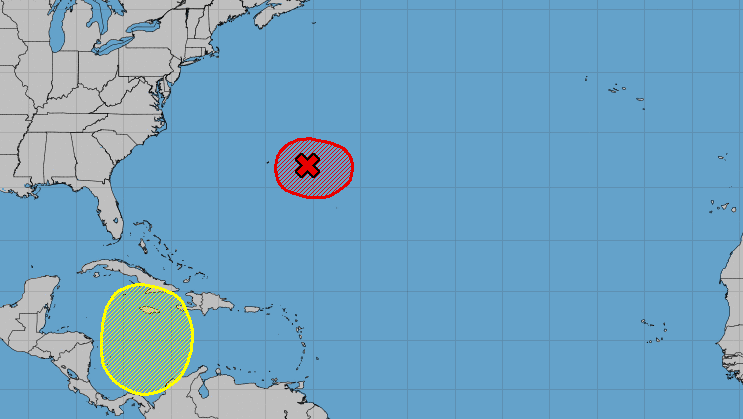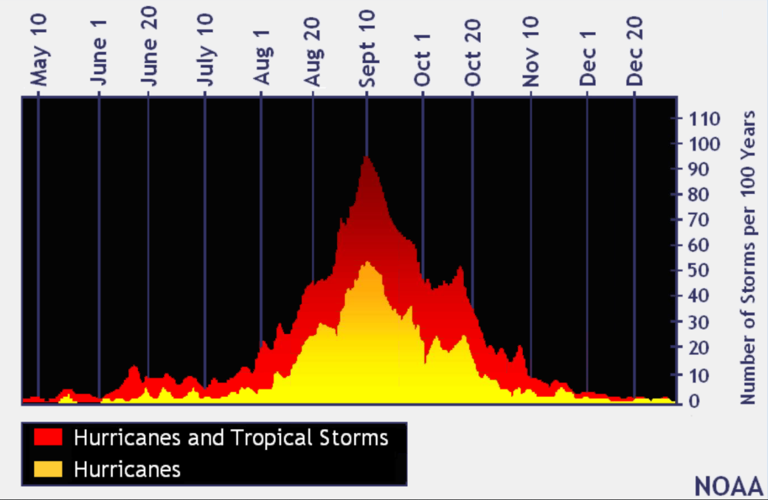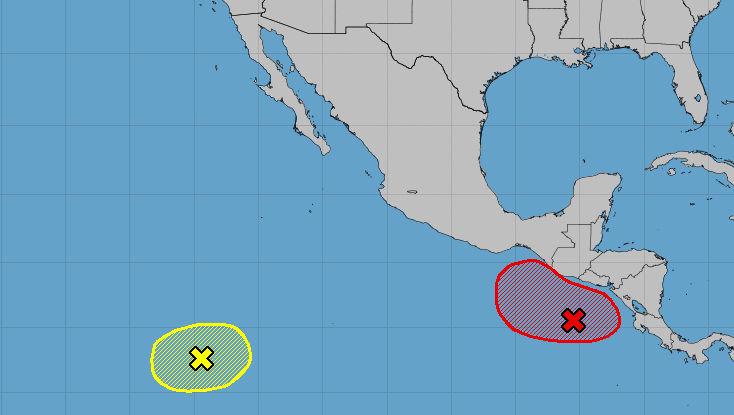A broad area of low pressure is forecast to develop over the southwestern Caribbean Sea during the next few days, National Hurricane Center forecasters said Friday morning.
The system is expected to move generally north through conditions that could support slow development early next week.
While it's still unclear how the disturbance might impact the Gulf of Mexico, WWL-TV meteorologist Payton Malone said a strong cold front coming down toward Louisiana from the northern U.S. should stop the system from reaching Louisiana.
"I don't see this being an issue for us certainly," Malone said in his Friday morning forecast.
Hurricane Tammy's remnants
The remnants of Hurricane Tammy have a 70% chance of regaining tropical characteristics in the next two to seven days, according to the National Hurricane Center. Regardless of development, the system, located a few hundred miles of east of Bermuda, is expected to bring gusty winds and heavy rain to the area in the next several days.
Those with interests in Bermuda should monitor the system's progress, forecasters said.
Hurricane Tammy had weakened to a post-tropical cyclone by Thursday morning after bringing minimal damage to Barbuda last weekend as a Category 1 storm.
Disturbances in the Pacific
A broad area of pressure a couple hundred miles south of El Salvador in the Pacific Ocean is expected to become a tropical depression or storm this weekend, hurricane forecasters said Friday morning. For now the system is moving west-northwest, away from the Gulf of Mexico.

Another area of low pressure over west of Central America is less likely to develop as it meanders out to sea, forecasters said.
The busiest time of hurricane season
We're now exiting what is historically the most active period of the Atlantic hurricane season.

In the last 100 years, the tropics have been the most active in August, September and October, with Sept. 10 being the peak of the Atlantic hurricane season, according to federal forecasters. (graphic via NOAA)
In the last 100 years, the tropics have been busiest from mid-August through October, with Sept. 10 being the peak of the season, according to federal forecasters. About 80% of the systems that have hit the Gulf Coast formed during this time, according to the National Weather Service in Slidell.
The 2023 hurricane season
The return of El Niño was initially expected to bring a wetter second half of the year to Louisiana and a reduced risk of hurricanes.
The National Oceanic and Atmospheric Association's Climate Prediction Center announced March 9 that La Niña, which usually causes more hurricanes to form in the Atlantic, was officially over after an unusually long three years.
El Niño and its sister La Niña are part of the El Niño-Southern Oscillation cycle, a set of conditions over the Pacific Ocean that affects weather patterns across the world. In Louisiana, the biggest effects involve hurricane season in the Atlantic Ocean.
Regardless, this year's first cyclone hit in January, long before the official start of hurricane season, and June alone saw three named storms. Now forecasters are predicting that 2023 will prove to be an above-average hurricane season, with 18 named storms.
The first tropical storm to form in the Atlantic this year was named Arlene, reaching wind speeds of 40 mph on June 2 as it headed for Cuba. Don was the first storm to reach hurricane status in 2023, producing maximum sustained wind speeds of 75 mph on July 22 before rapidly weakening to a tropical storm the following day.
The next storm to form will be named Vince. Here's the full list of this year's storm names.
Don't miss a storm update this hurricane season. Sign up for our free Hurricane Center newsletter.




